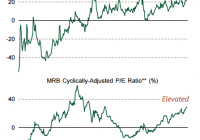Lipper Closed-End Fund Summary: October 2015
By Tom Roseen For the first month in seven equity and fixed income CEFs posted plus-side performance on average on both a NAV basis (+5.97% and +1.07%, respectively for October) and market basis (+7.50% and +3.41%). Year to date equity CEFs remained in the red for the fourth straight month, down 4.41%, while fixed income CEFs moved more solidly into the black, returning 1.54% on average on a NAV basis for the same period. For the month many of the major broad-based indices chalked up their best one-month return since October 2011, with the Dow Jones Industrial Average Price Only Index and the S&P 500 Composite Price Only Index returning 8.47% and 8.30%, respectively. Beleaguered Shanghai Price Only Composite and Xetra DAX posted a couple of the strongest returns in the global markets, returning 11.50% and 11.15%, respectively, for October as investors cheered easy-money news from both the Peoples Bank of China (PBOC) and the European Central Bank (ECB). Despite a weaker-than-expected jobs report at the beginning of the month, mixed economic data throughout the month, and a roller-coaster ride of corporate earnings reports, volatility-as measured by the CBOE Volatility Index (VIX)-fell 38% over the month to 15, remaining below the long-term average of 20. Investors appeared to shrug off a disappointing nonfarm payrolls report that showed the U.S. had added a lower-than-expected 142,000 jobs for September-below the consensus-expected 200,000-as investors perhaps realized the Federal Open Market Committee was probably not going to raise interest rates this year. As commodity prices rallied mid-month, the S&P 500 posted is strongest weekly gain for 2015. And while the Fed minutes’ discussing global risks kept the hawks in check, many felt the downside risk was on the mend. Ignoring a slight decline in industrial production for September, consumer sentiment rose in October for the first month in four. A surprise cut in interest rates by the PBOC, better-than expected earnings reports from a few heavyweight tech firms (Amazon (NASDAQ: AMZN ), Microsoft (NASDAQ: MSFT ), and Alphabet (NASDAQ: GOOG )), and hints from the ECB that further easing might be in the cards pushed stocks to a fourth consecutive week of plus-side performance and sent investors into risker assets for the month and out of some recently popular safe-haven plays. Battered energy stocks got a shot in the arm with the rise in commodity prices and on news the central bank in the second largest economy in the world had cut interest rates, sending Lipper’s domestic equity CEFs macro-group (+6.48%) to the top of the equity CEFs universe for the first month since August 2014. World equity CEFs (+5.46%) and mixed-asset CEFs (+5.03%) also fared well during the month. Treasury yields rose at all maturity levels along the curve after the Fed left the door open for possible rate increases later this year, with the largest increase witnessed in the six-month yield and the five-year yield, 15 bps each to 0.23% and 1.52%, respectively. For the first month in four all three fixed income CEF macro-groups posted plus-side returns, with world bond CEFs (+3.29%) leading the way, followed by domestic taxable bond CEFs (+1.19%) and municipal bond CEFs (+0.68%) as investors put some risk back in their portfolios. For October the median discount of all CEFs narrowed 157 bps to 9.58%-slightly worse than the 12-month moving average discount (9.50%). Equity CEFs’ median discount narrowed 91 bps to 11.29%, while fixed income CEFs’ median discount narrowed 160 bps to 8.41%. For the month 82% of all funds’ discounts or premiums improved, while 16% worsened.
